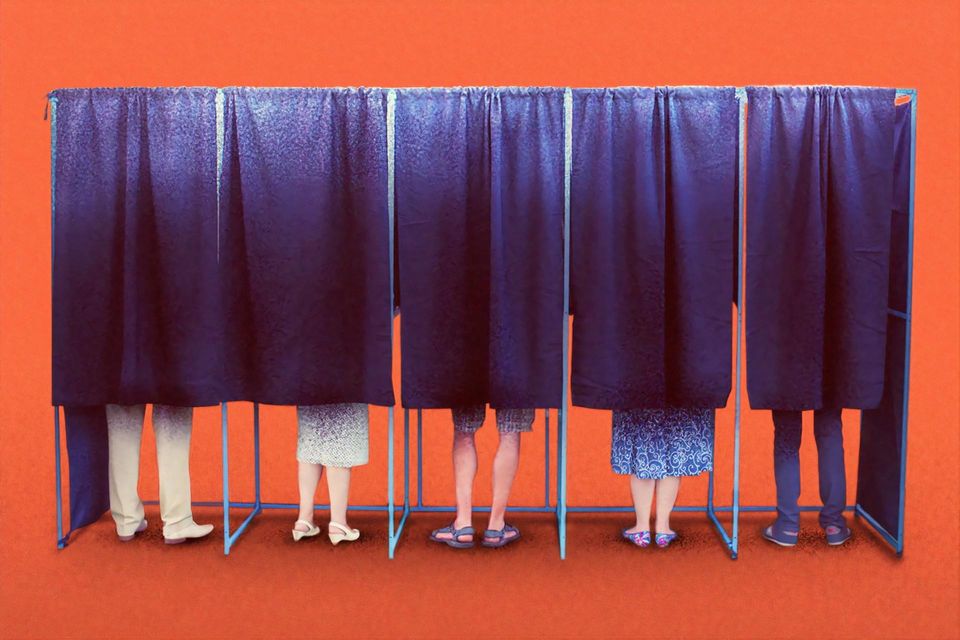DIGITAL DEMOCRACY
It's Time to Start e-Voting
By Maria Tataki
August 30, 2020
The COVID-19 pandemic has forced the postponement of national and subnational elections in over 60 countries and territories. Chileans saw their referendum for a new constitution postponed until October, with the government exploiting the lockdown to remove protest art from Santiago. Bolivians, following the resignation of Evo Morales in November 2019 and the indefinite postponement of the May presidential elections are now stuck with an interim president who seems in no mood to give up power.
The threat to democracy is severe. Elections are a safeguard of democratic institutions and the rule of law. Their postponement could and has already provided opportunities for wannabe authoritarians to further cement their hold on government structures and erode their democratic quality. Yet, conducting in-person elections under these conditions is not really a good option. Those elections that did take place faced record low voter turnouts, credibility issues, poll worker dropouts and even the infection of electoral officials. In Chicago, a poll worker died from COVID-19 and several others tested positive, creating fear that the election had fostered the spread of the virus.
Had an effective e-voting system been in place, it could have provided a viable and safe option. Indeed, in many parts of the world discussions have been animated to allow online voting. Following the disaster of the first round of the French municipal elections, a poll revealed that 56% of people would have welcomed the opportunity to vote online. In the U.S., several states are expected to follow the example of West Virginia, New Jersey and Delaware in enabling small sections of their electorates –mainly military and overseas voters and voters with disabilities - to vote online in this year’s presidential primaries. In the UK, the Labor Party elected its new leader in an online ballot with very high participation - 70% of its 550,000 members voted.
Despite e-voting’s small-scale success amidst the crisis, it is not the purpose of this article to encourage governments to rush its implementation during the pandemic. On the contrary! A rushed, insufficiently prepared implementation of e-voting could prove to be disastrous. It could fail to serve the very cause of democracy it is meant to support. It will render e-voting just another failed system that will be abandoned as quickly as it was introduced . The crushing of the election app for the Iowa Democratic caucus will resonate more strongly with the public than any of the successful efforts in other states.
Yet, the current pandemic should at least make us think about the necessity of putting such a system in place in time for the future, not only as a tool in the face of crises but also as a safeguard for our democracies. Since the beginning of the 1990s, we are facing a global decline in voter turnout. Participation in elections has fallen from 76% in the 1980s to less than 66% in recent years. The youth is increasingly less likely to vote. Such a trend poses a serious threat to the legitimacy and future of our democracies.
I will refrain from the highly optimistic statements of the past that internet voting could restore high turnout levels. We don’t so far have sufficient evidence to support such optimism with most studies estimating a positive albeit modest increase in voter turnout in the range of 2-4 %. However, even if e-voting is failing –at least for now- to achieve large increases in participation, it has been shown to prevent further declines. Evidence suggests that once people start e-voting, they are more likely to continue on voting than those who choose to vote in-person. Internet voting appears to trigger a process of habit formation which renders turnout somewhat more resilient to short-term feelings of political discontent.
More importantly, our democracies rely on the provision of an equal opportunity to participate in elections for all citizens. Yet, the current system of in-person voting renders the exercise of this fundamental democratic right exuberantly costly or even impossible for certain demographic groups. Those living in isolated regions often have to travel more than a hundred miles to reach the nearest polling station. People in overseas military service have frequently been unable to vote even where vote by mail is allowed. People with disabilities face insurmountable difficulties in accessing polling places which has historically kept their turnout very low. The list goes on but the concept is simple: for some, e-voting is the easiest or even the only option. There is no reason not to provide them with the opportunity to pursue it.
It is true that there are still several challenges to be addressed with many arguing that the available technology is still insufficient to properly safeguard the process from cyber-attacks while simultaneously eliminating verifiability and anonymity concerns. Nevertheless, e-voting already counts several successes, with 15 countries currently employing it. In Estonia, elections with the possibility of e-voting first took place in 2005. Since then, voters have been able to cast a vote online in three local elections, two national elections, and two European Parliament elections without any security violations. Switzerland and Canada have also successfully been using it for over a decade. Recent developments in blockchain technology could further boost the security of the process. Although no technology will ever be fully immune from cyber-attacks, there is a certain level of risk we can afford to accept. After all, even in-person elections are subject to the possibility of fraud and errors.
The biggest challenge will not be the technology itself but rather making people trust in it. We must ensure that voters understand the underlying technologies and have faith in the security and anonymity of e-elections. Otherwise, we run the risk of voter apathy, legitimacy loss and increasing disengagement even if e-voting remains a voluntary option.
Building the necessary trust will take time and will require full transparency and a series of information campaigns that governments must meticulously run. It will necessitate the establishment of accessible, fast and transparent mechanisms to review the outcomes by independent bodies- in a similar fashion to in-person elections. This will be a highly complex yet not impossible task. The case of Estonia is very telling in this regard. The share of e‐votes has increased from 1.85% in 2005 to 30.5% in 2015 and 44% in 2019.As the technology proves itself and more people acquire access to it, this percentage is expected to further increase.
E-voting has a lot to offer. It is expected to speed up the process, reduce costs and eliminate informal voting. More importantly, it could act as a safeguard to our democracies by protecting the fundamental right to vote -especially amid crises- and halting declines in voter turnout. It could even constitute a fundamental step in the further digitization of governmental institutions. The elaboration of an electronic I.D., could open the gateway to an internet-based deliberative democracy. However, there is no point in rushing its implementation. We must give it the time it needs for both the technology to mature and voters to acquire trust in it. We must not force people to e-vote but rather provide them with the option to do so. After all, we must take into account the still very persistent digital divide. But, we must start now.
Read More


Watch Our Episodes





